MONTHS AHEAD of the 2022 presidential elections, alternative media outfits and community journalists jumpstarted preparations for safely covering the national polls.
As election coverage is a dangerous task, following a set of safety guidelines while gathering news in the field would be helpful, veteran journalist Inday Espina-Varona said in her remarks during the first part of the “Safely covering the 2022 national elections” webinar held on November 24.
Representatives from over 30 alternative media groups, universities, and international organizations attended the first leg of the two-part webinar, which was organized by Altermidya in partnership with Bulatlat and the International Media Support (IMS).
The webinar was launched to address the need to ramp up coverage preparations ahead of the 2022 elections that will surely be mired in problems compounded by the COVID-19 health crisis, including issues on logistics, overcrowding, health, and security.
“Magandang makakuha tayo ng tips. Hindi man tayo lubusang mapoproteksyunan sa ating gawain, maganda na mayroon tayong hawak na gabay,” Varona, an Altermidya board member and host of ALAB Analysis, said.
“Alam natin kung paano tayo nakikitungo sa isa’t isa, alam natin kung ano ang mga dapat nating gawin para hindi tayo malagay sa panganib,” Varona stressed.
Timely safety lessons
Davao Today reporter and National Union of Journalists of the Philippines (NUJP) vice-chair Kath Cortez and former NUJP safety officer JB Deveza tackled “Election coverage lessons from the Ampatuan massacre.”
Meanwhile, Lito Averia, IT consultant for Namfrel, focused on “Digital safety for media during elections.”
Deveza and Cortez anchored their presentation on the dangers that come with working as a journalist, noting that the Ampatuan massacre – the deadliest single event for journalists in the world – has debunked long-held beliefs like safety in numbers, in daylight, and the company of state forces like police and military.
Using the NUJP’s official safety training presentation, Deveza stressed that there are threats and opportunities in every situation even outside of elections. “What we’d like to do as journalists is to minimize the risks involved in covering. How can we cover safely and get the story without risking our lives and those of our colleagues? The mindset is always to increase the opportunity vis-à-vis the risk involved in coverage.”
It helps to be prepared, he said. “You do not go to certain coverages without really getting to know kung ano ang pinapasukan natin.”
Pre-deployment considerations should be prepared, including the choice of equipment, documents, research, and contingency plan. Important questions on bringing any equipment include considering whether the equipment allows mobility and draws attention.
“Karamihan sa’tin, we just get our phones, laptops, cameras, and that’s it. We have to realize that being prepared and having a contingency plan, especially in covering difficult situations, in the end, might save us,” Deveza said.
Cortez said that a fully-prepared journalist plans even the tiniest of details, especially when it comes to the vehicles that will be used for coverage. These considerations include where to park to conveniently enter and exit, fastest possible routes, logistical requirements like logo and color, conditions of various parts like tires and brakes, important documents and licenses (press ID, endorsement letter, driver’s license), and properly orienting drivers on the situation of the destination.
Researching on the candidates and parties that will be covered is a must, Deveza said, and such research should include the parties’ history, track record, and possible threats that they might be facing.
Journalists covering the elections should also come up with a contingency plan, which includes considering who knows you are there, what could go wrong, what happens if things go wrong, what backup you have at your immediate disposal, where the safe areas are, and where the car and driver are.
“Situational awareness” is also key, Cortez added. In some cases, this means knowing what a politician and their supporters are capable of doing under specific circumstances.
Training for stress management and anxiety alleviation techniques was also recommended, to reduce the negative impacts of coverage on journalists.
“Mas madali ‘yung paggalaw ng mga reporters natin na pinapadala sa field ‘pagka less ‘yung stress na na-experience nila while doing the coverage,” Cortez explained.
Digital safety
Averia then shared essential points on digital safety, which served as a crash course for both media professionals and individuals concerned about how their digital footprint could be compromised.
The IT professional gave considerations and suggestions on ensuring personal safety on the Internet, especially for journalists.
He recommended using strong passwords, not using the same password for all accounts, and using a password manager to keep track.
Another layer of security that can add protection to digital assets is the use of “two-factor authentication” that serves as an extra layer of security and requires a user to verify one’s identity before logging in. This can be done through various means, including using a smartphone application to approve authentication requests
Averia also recommended using a virtual private network or VPN that gives one online privacy and anonymity by creating a private network that shrouds the user from potential trackers. VPN works by masking a user’s internet protocol or IP address, rendering online actions virtually untraceable, and hiding key information on browsing history, IP address and location, streaming location, devices, and web activities.
A general rule of thumb mentioned during Averia’s presentation is to “think before you click.” Being careful and mindful about what one posts prevents future regrets as the Internet “remembers everything,” Averia stressed.
The IT expert also gave out other tips including keeping one’s device updated in terms of operating system and applications, use of antimalware, fixing privacy settings, avoiding downloading free software carelessly, safe browsing, and covering a computer, laptop, or phone’s camera with a piece of tape.
The next leg of the two-part webinar is slated on December 15, where election protocols for journalists will be discussed.

![MONTHS AHEAD of the 2022 presidential elections, alternative media outfits and community journalists jumpstarted preparations for safely covering the national polls. As election coverage is a dangerous task, following a set of safety guidelines while gathering news in the field would be helpful, veteran journalist Inday Espina-Varona said in her remarks during the first part […]](https://www.altermidya.net/wp-content/uploads/2021/11/Final-poster_Nov-24-webinar-e1637819312810.png)

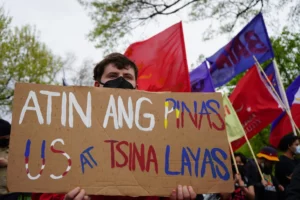
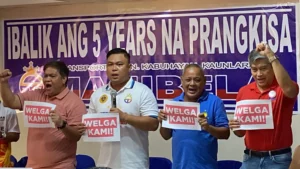
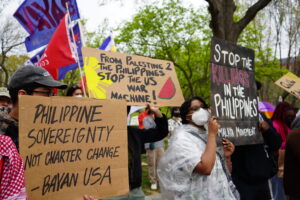

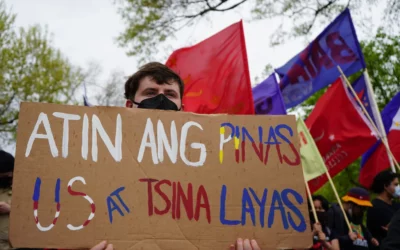
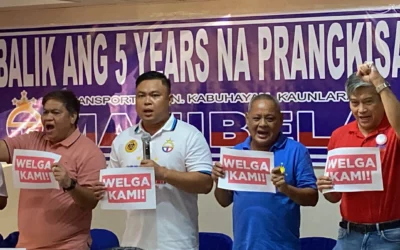
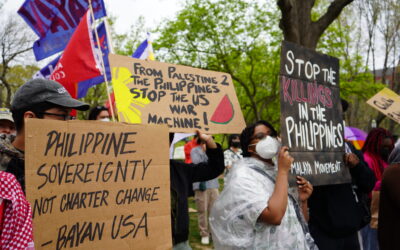
0 Comments